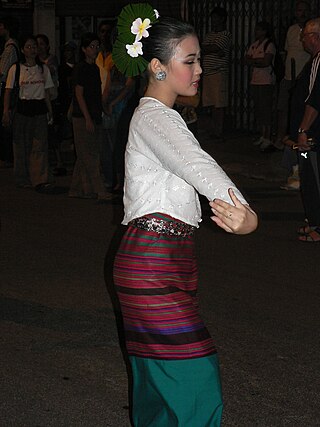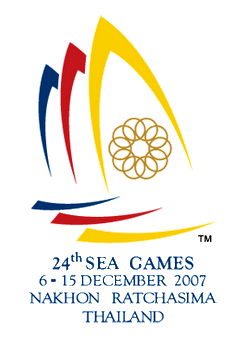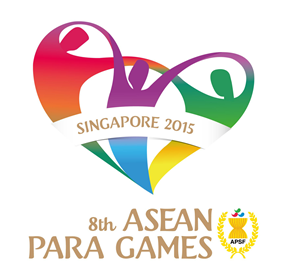
The Lan Na Kingdom or The Kingdom of Lanna, also known as Lannathai, and most commonly called Lanna or Lanna Kingdom, was an Indianized state centered in present-day Northern Thailand from the 13th to 18th centuries.

The Northern Thai people or Tai Yuan, self-designation khon mu(e)ang are a Tai ethnic group, native to nine provinces in Northern Thailand, principally in the area of the former kingdom of Lan Na. As a Tai group, they are closely related to Tai Lü and Tai Khün with regards to common culture, language and history as well as to Thailand's dominant Thai ethnic group. There are approximately 6 million Tai Yuan. Most of them live in Northern Thailand, with a small minority 29,442 living across the border in Bokeo Province of Laos. Their language is called Northern Thai, Lanna or Kham Mueang.

Chiang Mai is the largest city in northern Thailand, the capital of Chiang Mai province and the second largest city in Thailand. It is 700 km (435 mi) north of Bangkok in a mountainous region called the Thai highlands and has a population of 1.2 million people as of 2022, which is more than 66 percent of the total population of Chiang Mai province.

Laab / Larb is a type of Lao meat salad that is the national dish of Laos, along with green papaya salad and sticky rice. Laab in the Lao language is a noun that refers to meat or other flesh that has been finely chopped and pounded. It is also considered a food of good luck in both Laos and Thailand because it has homonyms that mean 'lucky' in both languages, derived from लाभ in Sanskrit. Laab is of Lao origin, but is also eaten in other regions, most prominently the neighboring former Lan Xang territory, or modern day Laos and the northeastern and northern areas of Thailand, Isan and Lanna where the Lao have extended their influence. Other local variants of laab also feature in the cuisines of the Tai peoples of Shan State, Burma, and Yunnan Province, China.

The 1993 Southeast Asian Games, officially known as the 17th Southeast Asian Games were held in Singapore from 12 to 19 June 1993 with 29 sports in 440 events featured in this edition. This was the third time Singapore hosted the games after 1983 and 1973 competition. It was opened by President Wee Kim Wee. The Games featured 29 sports in 440 events. The final medal tally was led by Indonesia.

The 2003 Southeast Asian Games, officially known as the 22nd Southeast Asian Games, SEA Games 22 and also known as Vietnam 2003, was a Southeast Asian multi-sport event held from 5 to 13 December 2003 in Hanoi, Vietnam. This was the first time that Vietnam had staged the SEA Games, and it saw East Timor, which had just gained independence in 2002; although not being an ASEAN member and despite its geographical location closer to the Pacific archipelago than the Asian continent, making its debut at the games.

The 2007 Southeast Asian Games, officially known as the 24th Southeast Asian Games, was a Southeast Asian multi-sport event held in Nakhon Ratchasima (Korat), Thailand. This was the sixth time Thailand hosted the Southeast Asian Games and its first time since 1995. Previously, Thailand also hosted the 1959 inaugural games, 1967 games, 1975 games and the 1985 games.

The 2009 Southeast Asian Games, officially known as the 25th Southeast Asian Games, was a Southeast Asian multi-sport event hosted by Vientiane, Laos. This was the first time Laos had held the Southeast Asian Games as Laos had previously declined hosting the 1965 Southeast Asian Peninsular Games, citing financial difficulties. This was also the first time the Southeast Asian Games was held in a landlocked country.

Chiang Saen is a district (amphoe) in the northern part of Chiang Rai province, northern Thailand. Chiang Saen is an important entrepôt for Thailand's trade with other countries on the upper part of Mekong River.

Chofa is a Lao and Thai architectural decorative ornament that adorns the top at the end of wat and palace roofs in most Southeast Asian countries, such as Thailand, Cambodia, Laos, and Myanmar. It resembles a tall thin bird and looks hornlike. The chofa is generally believed to represent the mythical creature Garuda, half bird and half man, who is the vehicle of the Hindu god Vishnu.

The 2008 ASEAN Para Games, officially known as the 4th ASEAN Para Games, was a Southeast Asian disabled multi-sport event held in Nakhon Ratchasima, Thailand from 20 to 26 January 2008, one month after the 2007 Southeast Asian Games. This was the first time Thailand hosted the ASEAN Para Games.

Tai Tham script is an abugida writing system used mainly for a group of Southwestern Tai languages i.e., Northern Thai, Tai Lü, Khün and Lao; as well as the liturgical languages of Buddhism i.e., Pali and Sanskrit. It is historically known as Tua Tham. In Thailand and Myanmar, the script is often referred to as Lanna script in relation to the historical kingdom of Lan Na situating in the Northern region of modern day Thailand and a part of Shan state in Myanmar. Local people in Northern Thailand also call the script as Tua Mueang in parallel to Kam Mueang, a local name for Northern Thai language. In Laos and Isan region of Thailand, a variation of Tai Tham script, often dubbed Lao Tham, is also known by the locals as To Tham Lao or Yuan script. Tai Tham script is traditionally written on a dried palm leaf as a palm-leaf manuscript.

The 2009 ASEAN Para Games, officially known as the 5th ASEAN Para Games, was a Southeast Asian disabled multi-sport event held in Kuala Lumpur, Malaysia from 15 to 19 August 2009. This was the second time Malaysia hosted the ASEAN Para Games and its first time since 2001.

Inthakhin is the name of the Lak Mueang of Chiang Mai. It is said that the pillar was first erected by King Mangrai at the founding of the city on April 12, 1296 CE at Wat Sadue Mueang on Inthawarorot road. It was brought to its present location inside a shrine on the temple grounds of Wat Chedi Luang by the Lanna king Kawila in 1800 CE.
ASEAN University Games (AUG) is a biennial sports event that involves athletes from the universities of the ASEAN member countries. It is regulated by ASEAN University Sports Council (AUSC) which was established in 1980.

The 2012 ASEAN University Games officially known as the 16th ASEAN University Games was a Southeast Asian university multi-sports event held in Vientiane, Laos. This was the first time Laos hosted the games. Laos is the eighth nation to host the ASEAN University Games after Thailand, Indonesia, Malaysia, Singapore, Brunei, Philippines and Vietnam.

The 2015 ASEAN Para Games, officially known as the 8th ASEAN Para Games, and commonly known as Singapore 2015, was a Southeast Asian disabled multi-sport event held from 3 to 9 December 2015 in the city-state of Singapore. Unlike the previous editions the games were held six months after the closing of the 2015 Southeast Asian Games. This was Singapore's first time as host of the ASEAN Para Games.

The 2017 ASEAN Para Games, officially known as the 9th ASEAN Para Games, was a Southeast Asian disabled multi-sport event held in Kuala Lumpur, Malaysia, 17 days after the 2017 Southeast Asian Games from 17 to 23 September 2017. This was the third time Malaysia host the ASEAN Para Games and its first time since 2009. Previously, Malaysia also hosted the inaugural games in 2001.
The 39th Thailand National Games were held in Chonburi, Thailand from 5 to 19 December 2010, with competition in 39 sports and 76 disciplines. These games were held in the Institute of Physical Education Chonburi Campus Sport Center.

The 2016 ASEAN University Games, officially known as the 18th ASEAN University Games, was a Southeast Asian university multi-sports event held in Singapore. This was the third time Singapore hosted the ASEAN University Games, and its first time since 1994. Previously, Singapore also hosted the 1986 games.



















